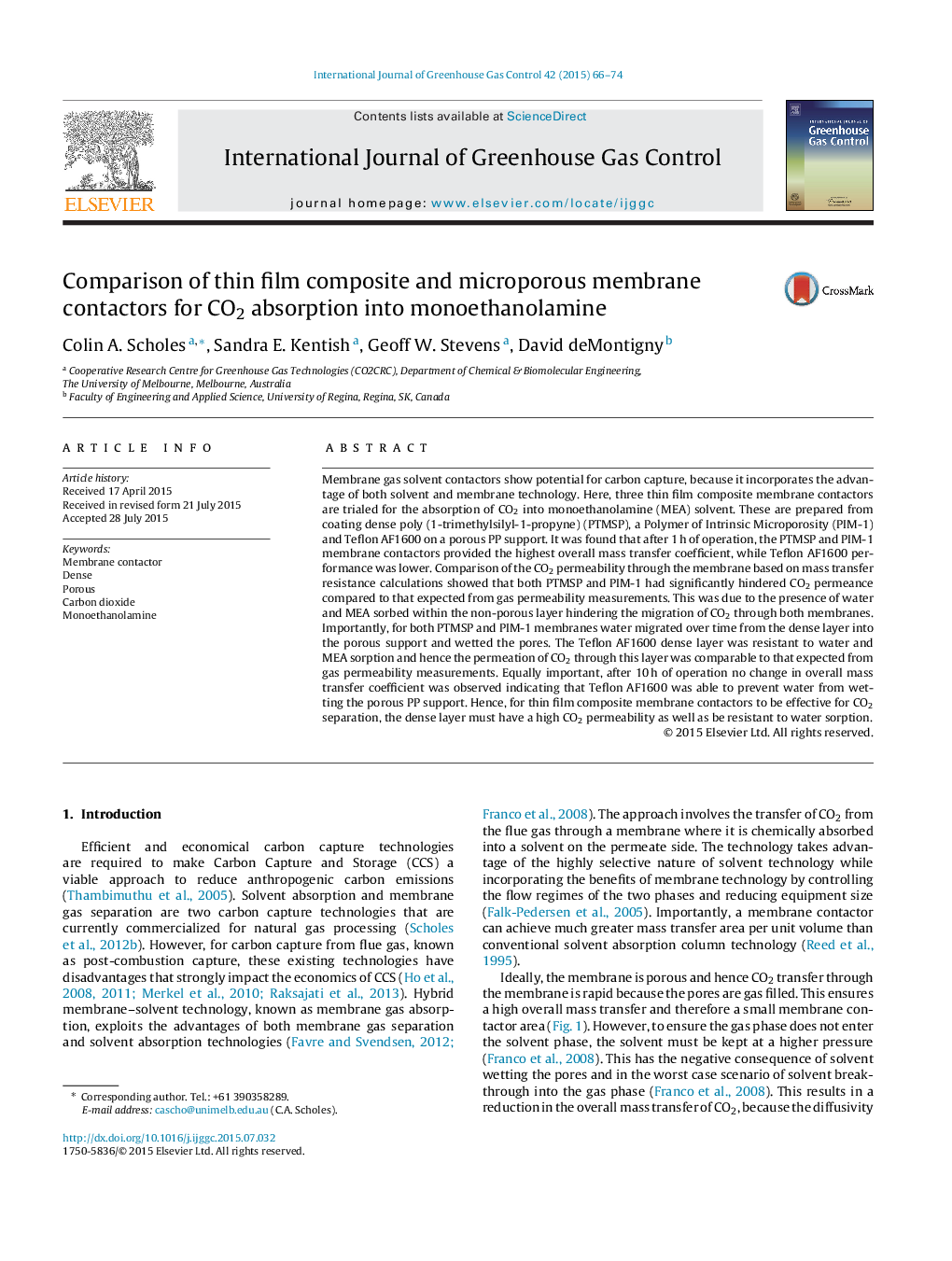| کد مقاله | کد نشریه | سال انتشار | مقاله انگلیسی | نسخه تمام متن |
|---|---|---|---|---|
| 8090442 | 1521979 | 2015 | 9 صفحه PDF | دانلود رایگان |
عنوان انگلیسی مقاله ISI
Comparison of thin film composite and microporous membrane contactors for CO2 absorption into monoethanolamine
دانلود مقاله + سفارش ترجمه
دانلود مقاله ISI انگلیسی
رایگان برای ایرانیان
کلمات کلیدی
موضوعات مرتبط
مهندسی و علوم پایه
علوم زمین و سیارات
فرآیندهای سطح زمین
پیش نمایش صفحه اول مقاله

چکیده انگلیسی
Membrane gas solvent contactors show potential for carbon capture, because it incorporates the advantage of both solvent and membrane technology. Here, three thin film composite membrane contactors are trialed for the absorption of CO2 into monoethanolamine (MEA) solvent. These are prepared from coating dense poly (1-trimethylsilyl-1-propyne) (PTMSP), a Polymer of Intrinsic Microporosity (PIM-1) and Teflon AF1600 on a porous PP support. It was found that after 1Â h of operation, the PTMSP and PIM-1 membrane contactors provided the highest overall mass transfer coefficient, while Teflon AF1600 performance was lower. Comparison of the CO2 permeability through the membrane based on mass transfer resistance calculations showed that both PTMSP and PIM-1 had significantly hindered CO2 permeance compared to that expected from gas permeability measurements. This was due to the presence of water and MEA sorbed within the non-porous layer hindering the migration of CO2 through both membranes. Importantly, for both PTMSP and PIM-1 membranes water migrated over time from the dense layer into the porous support and wetted the pores. The Teflon AF1600 dense layer was resistant to water and MEA sorption and hence the permeation of CO2 through this layer was comparable to that expected from gas permeability measurements. Equally important, after 10Â h of operation no change in overall mass transfer coefficient was observed indicating that Teflon AF1600 was able to prevent water from wetting the porous PP support. Hence, for thin film composite membrane contactors to be effective for CO2 separation, the dense layer must have a high CO2 permeability as well as be resistant to water sorption.
ناشر
Database: Elsevier - ScienceDirect (ساینس دایرکت)
Journal: International Journal of Greenhouse Gas Control - Volume 42, November 2015, Pages 66-74
Journal: International Journal of Greenhouse Gas Control - Volume 42, November 2015, Pages 66-74
نویسندگان
Colin A. Scholes, Sandra E. Kentish, Geoff W. Stevens, David deMontigny,